
According to the Energy Information Administration (EIA), world oil inventories are about 425 million barrels higher than their “normal” levels. In the U.S., inventories stand a 1.368 billion barrels, a few million off their recent peak. Given that supply glut, how could oil futures prices be at $50 after falling below $30?
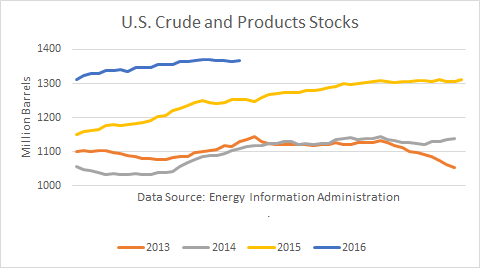
One answer is that the futures market assesses future developments. As discussed below, the peak of the glut appears behind us and the U.S. oil market is tightening, as rising demand narrows the supply-demand gap. This is best observed by looking at the trends in inventory storage changes for both petroleum products and crude oil.
Petroleum Market Supply-Demand Balance
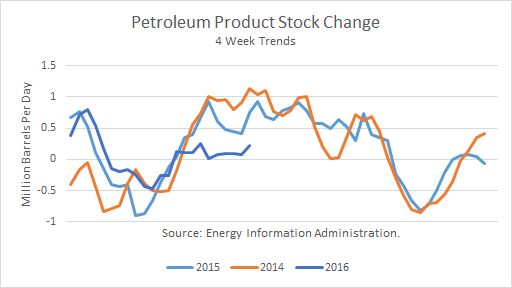
In petroleum products, the 4-week build trend is 239,000 b/d, substantially lower than in either of the past two years. The reason is higher product demand, which was up about 600,000 b/d (3.1%) v. the same weeks last year.
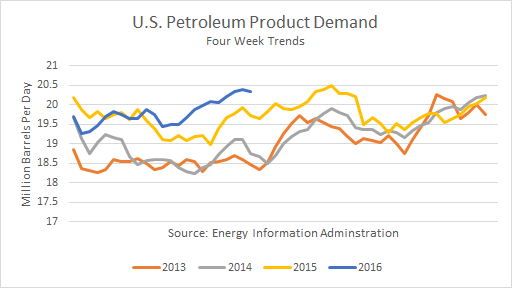
About half of that gain was due to the rise in gasoline demand. Because the EIA demand estimates only measure draws from primary inventories, instead of end-user consumption, I reviewed data that determines gasoline use most directly: vehicle miles traveled (VMT) and miles per gallon (MPG).
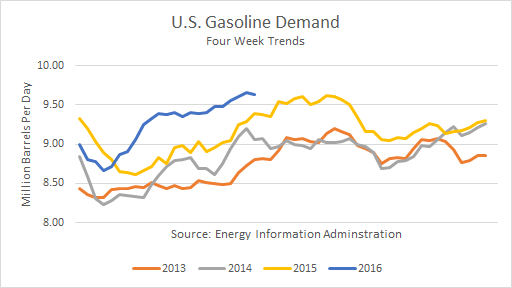
Although the data is delayed a few months, VMT trends have shown a significant rise since late 2014, when crude prices collapsed and retail prices fell. Total VMT for the U.S. broke the old record reached in late 2007 in 2015.
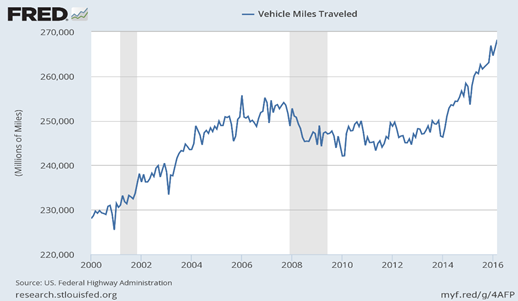
The twelve-month, year-over-year increase in VMT is 4% (March 2016). In 2016 year-to-date, gas demand is up 4.1% v. the same period last year. This confirms the EIA demand data. I reached that conclusion by reviewing data on MPG.
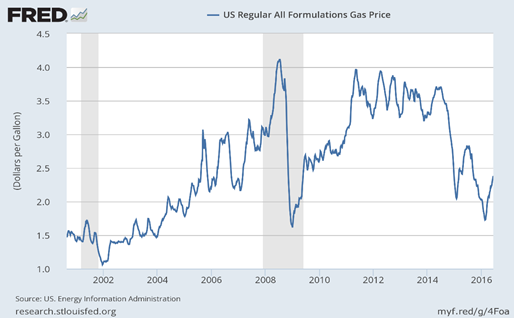
The annual changes in MPG have been small. The EIA estimates that mpg for the U.S. fleet of cars and trucks will increase by 1.7% in 2016.
Low retail gasoline prices have clearly been instrumental in the surge in driving and gasoline demand. In the year-to-date, prices had been 16 % lower, on average, year-over-year. In the latest week, the 12-month decline is 14%.
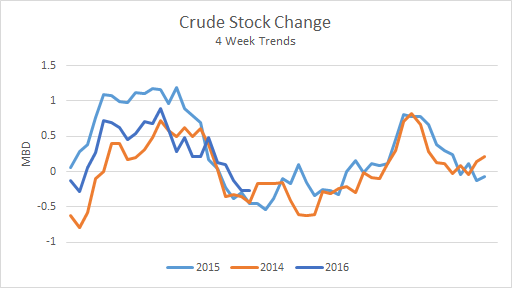
Crude Market Supply-Demand Balance
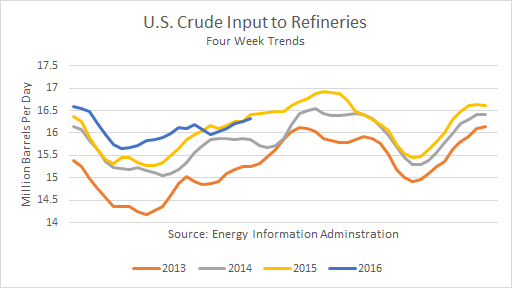
Similarly, the crude oil market balance has been tightening. Over the past 4 weeks, crude demand has exceeded supply by 268,000 b/d. That is just slightly higher than for the same week over the past two years.
Demand at U.S. refineries is comparable to last year and higher than in the two prior years. Refinery runs are likely to increase further to meet stronger summer product demand.
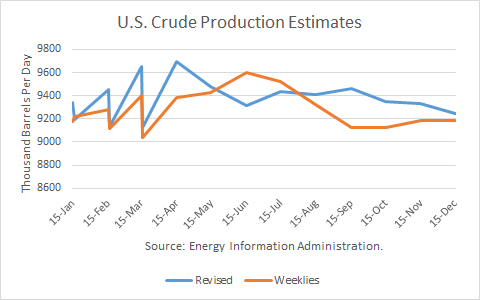
As of March 2016, U.S. crude production is down over 550,000 b/d from its peak in April 2015. The EIA weekly reports in crude production have shown a much faster decline than the more accurate, revised monthly reports.
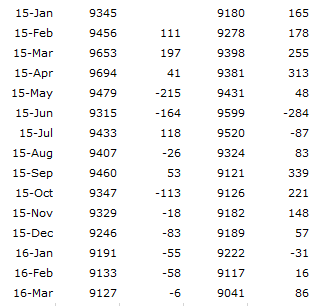
Conclusions
In the world's largest petroleum market, the supply-demand balance has been tightening. This further supports my assessment in early March that the world oil market price has bottomed.
Check back to see my next post!
Best,
Robert Boslego
INO.com Contributor - Energies
Disclosure: This contributor does not own any stocks mentioned in this article. This article is the opinion of the contributor themselves. The above is a matter of opinion provided for general information purposes only and is not intended as investment advice. This contributor is not receiving compensation (other than from INO.com) for their opinion.

As inventory diminishes, demand out weighs supply for crude oil barrels. The summer is a gap that stops the tap!
oil should be lower over the summer starting late June. I would say there was price run up for the refineries to make gasoline for the summer driving season. Now that price run up is finished.
Oil is always artificially higher in the summer.
Good point, I'm just so suspicious of every move with all the now admitted manipulation in these so called markets.
It's being artificially propped up by TPTB to maintain confidence for the sheeple in the deteriorating US economy, same thing with stocks and copper.
OLD FASHIONED I KNOW BUT IT IS SUPPLY AND DEMAND. DEMAND HAS INCREASED SLIGHTLY BUT SUPPLY HAS JUMPED A GREAT DEAL WITH IRAN PUMPING AS MUCH AS POSSIBLE AND THE REST OF OPEC AND OTHER SUPPLIERS ADDING BARRELS PER DAY. IN A TRUE UNCONTROLLED MARKET PRICE WOULD DROP SOON ON THIS OVERSUPPLY-WE'LL SEE!